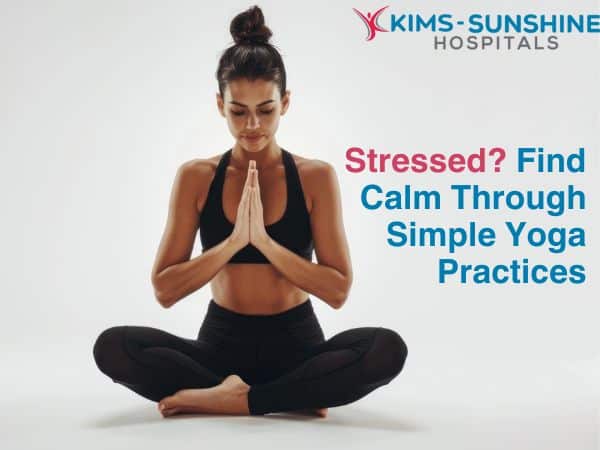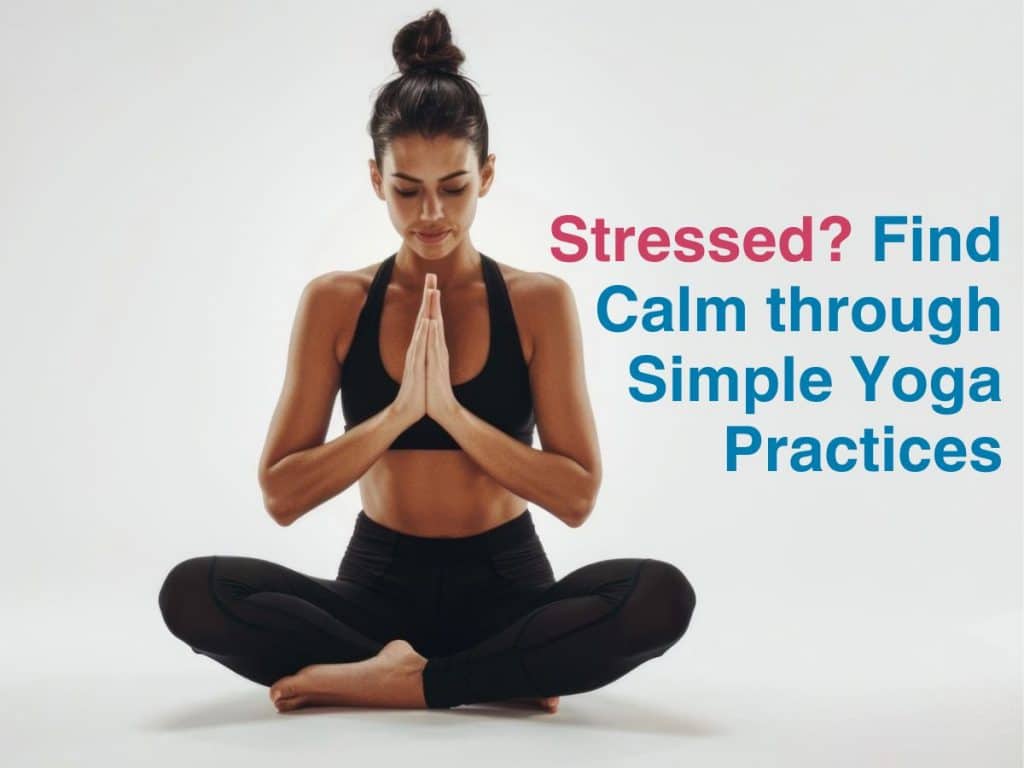
Stressed? Find Calm through Simple Yoga Practices

enrolls in yoga classes, only to get humbled quickly during the meditation scene. It is not as easy to calm down and breathe when you have thoughts scrambling about in multiple tabs in your brain, and they all seem to collide.
Benefits of Yoga for Stress Relief
Apart from the undeniable pros of practicing yoga – increased body flexibility, weight loss, and pain management, yoga can offer various advantages like stress relief, better sleep, self-growth, and improved quality of life. While the
basic asanas like Surya Namaskar or the cat-cow pose can relieve knots and body aches, coordinated breathing while stretching can help increase the production of endorphins- the feel-good hormones and help improve our mood for the day.
You also understand the limits of your body and how much your body can do. Many studies have shown that regular yoga sessions can even help reduce depression or anxiety-related symptoms, and may even lead to a decrease in the need for
drug usage.
Beginner Yoga Poses for Stress Relief
If you are a newbie to yoga, don’t worry. Some of the simplest but most effective asanas or poses include the cat-cow pose, the corpse pose, the child’s pose, and the legs-against-the-wall pose. Try to hold each pose for about 5 minutes
initially. You can go up to 15 minutes too, if possible. Concentrate on your breathing while doing each of them. There is no need to hold your breath at any point in time unless it is explicitly mentioned.
Yoga Breathing Techniques to Reduce Stress
Pranayama is the Sanskrit term for yogic breathing and there are many techniques you could follow – all of which will help calm you down and even improve the quality of sleep. The different ones are as follows: Breathing in with
alternate nostrils – Nadi Shodhana Kapaalabhati – Forceful exhalation using your abdominal core muscles Ujjayi Breathing Simhasana Bhraamari Sitali Breathing
Yoga Nidra for stress and anxiety
Nidra means sleep and this term simply means Yogic Sleep. You need to lie down on a mat or on the floor in the savasana pose to begin. Listen to a voice guiding you on techniques of relaxation and deep breathing. This is the easiest way
to get into meditation because there is no blank silence and you have someone telling you what to do exactly, and the best time to do it is at night, right before falling asleep.
Conclusion
Swami Satchidananda aptly says “Calming the mind is yoga. Not just standing on the head.” This should give you the gist – that yoga offers multiple benefits and not just one. If you are not sure about how to begin with your routine,
then try to enroll in classes, so that you stay accountable. This will allow you to socialize and understand why different people may prefer to perform yoga. Each of the asanas has its purpose and there are different levels too- hatha
yoga is more rigorous compared to other forms.






